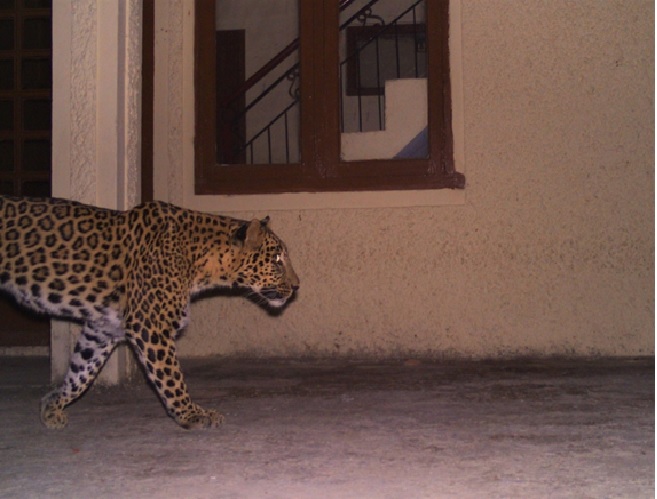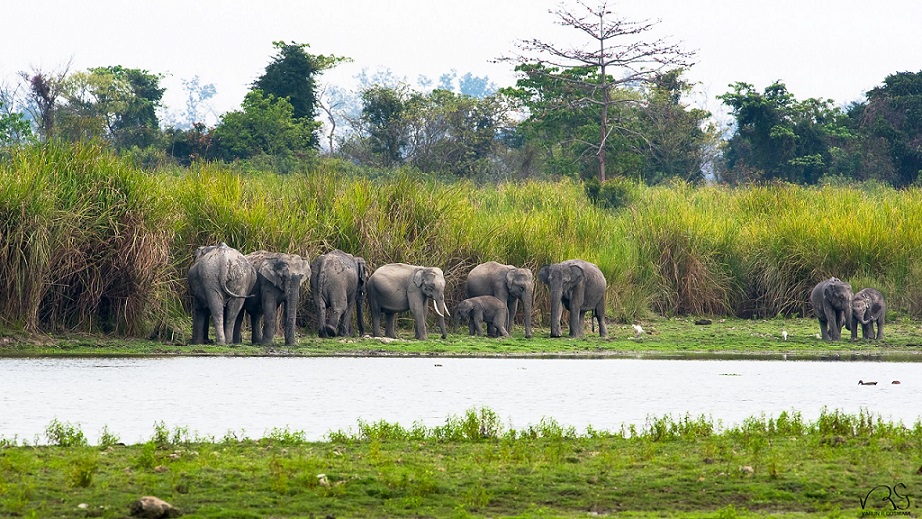
Leopard from camera trap in Shongi © Himachal Pradesh Forest Department
Environmental conservation studies normally focus on the ecological aspects of landscapes and the socio-economic facets of people living in their neighbourhood. A new study has highlighted that it may perhaps be better to understand the perspectives of the people also to have a more holistic view.
The study conducted in Hamirpur, a district in Himachal Pradesh, where people have been co-existing with leopards for decades now, has come up with some very interesting findings that could go a long way in mounting improved conservation efforts in the area.
The research, for instance, found that the people in the district thought of leopards as not merely instinct- driven animals but as adaptive beings who respond to specific situations. They considered the animals to be thinking beings, possessing qualities such as conscious thought, self and kinship, that are usually attributed only to humans.
The researchers used an ethnographic framework wherein the primary researcher spent a substantial amount of time involved in everyday activities such as farming, cooking and travelling in the landscape. Permanent village residents, migratory shepherds and forest department personnel were the main stakeholder groups interviewed for the study.

The team © Shweta Shivakumar
" Multiple participants strongly believed that the leopards that they presently see in their surroundings are not the wild ones that they have been sharing the landscape with for decades and have learnt about through myths and stories. "
They conducted qualitative thematic analysis using an inductive framework. Instead of identifying themes prior to analysis, the themes that emerged from within the transcripts were identified, compiled and substantiated using extant literature.
The participants shared several myths and stories featuring leopards, including a conspiracy theory that the Government has recently released “domesticated” leopards into the surrounding landscape. Multiple participants strongly believed that the leopards that they presently see in their surroundings are not the wild ones that they have been sharing the landscape with for decades and have learnt about through myths and stories. Instead, they believed that they are “paltu” (domesticated) leopards that the forest department has released to protect the forested areas from human intrusion.
Narratives such as the conspiracy theory has brought to light the human-human tensions between stakeholders and exemplified a way in which human-animal dynamics were affected by human-human conflicts too.
Researchers from Wildlife Conservation Society – India, Forest Department of Himachal Pradesh Government and Norwegian Institute of Nature Research conducted the study. The team consisted of Dhee, Vidya Athreya, John D. C. Linnell, Shweta Sivakumar and Sat Pal Dhiman. They have published a report in the British Ecological Society’s journal People and Nature, titled “Leopard that Learnt from the Cat, and other narratives of carnivore-human coexistence in northern India.”
A press release from Wildlife Conservation Society – India, noted, “this study illustrates the significance of locally present narratives in moulding relationship between humans and animals within shared landscapes, consequently underlining the possible shortcomings of looking at human-animal dynamics only through the narrow lenses of ecology or socio-economics.”
India Science Wire











